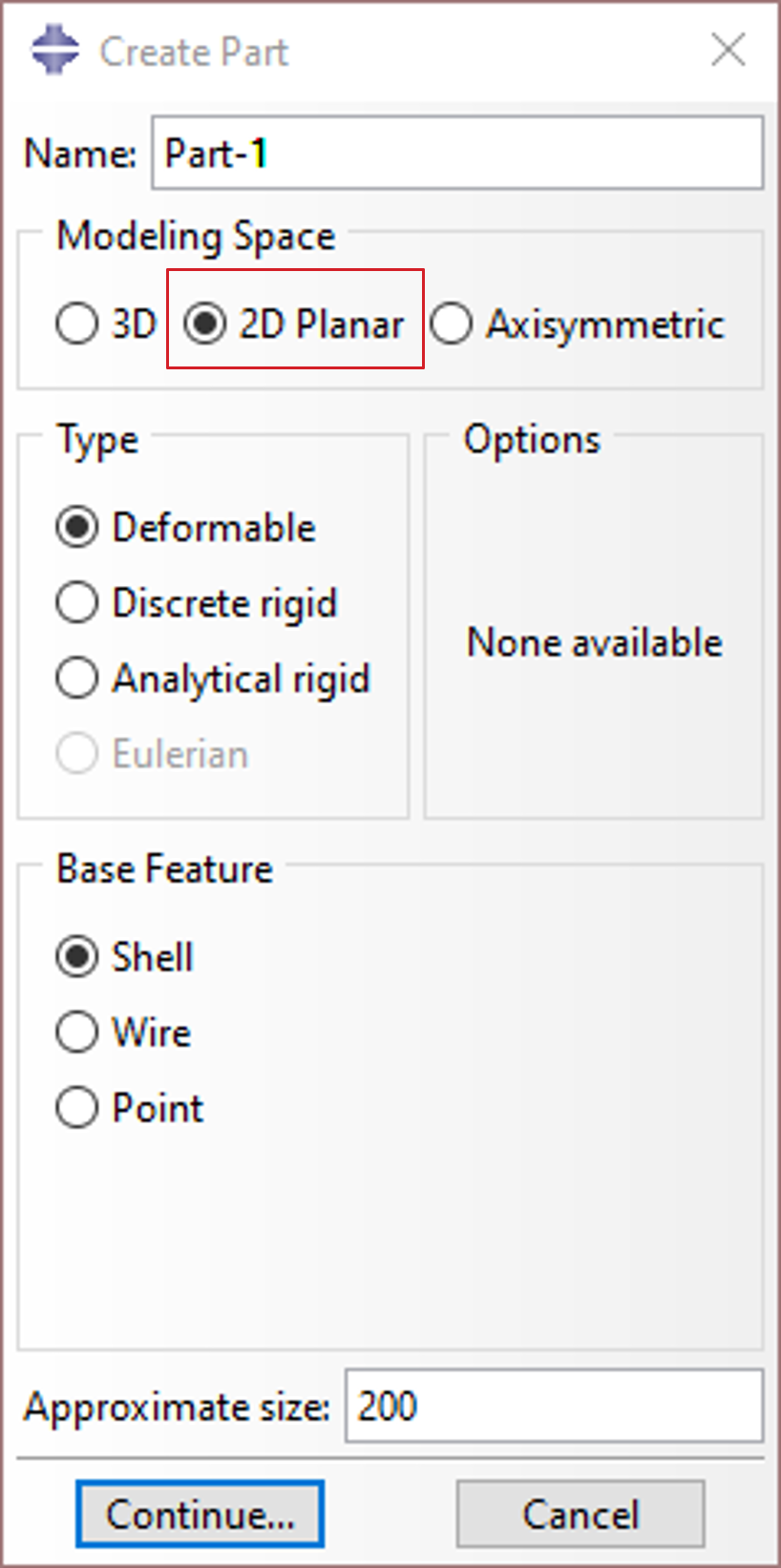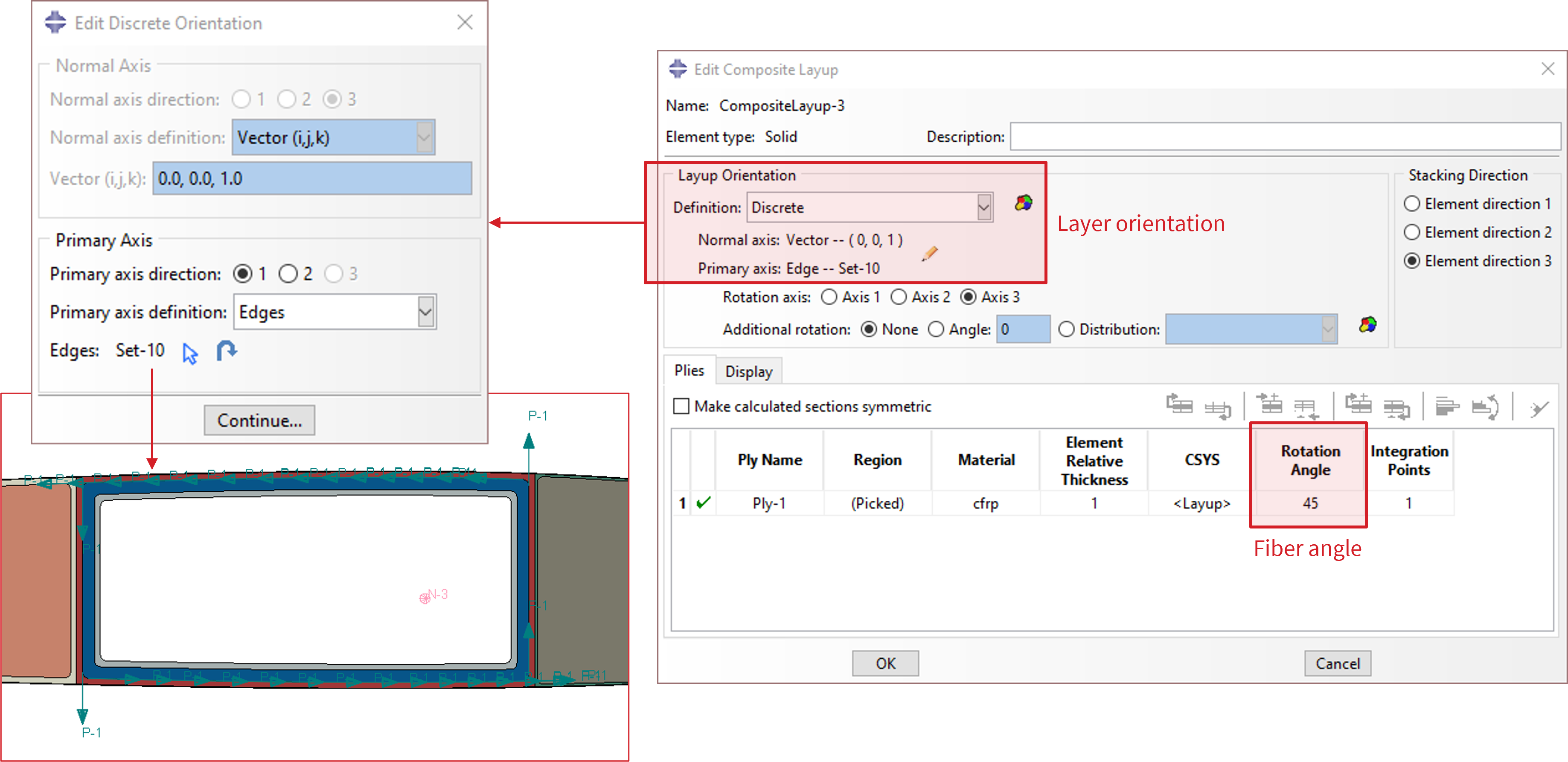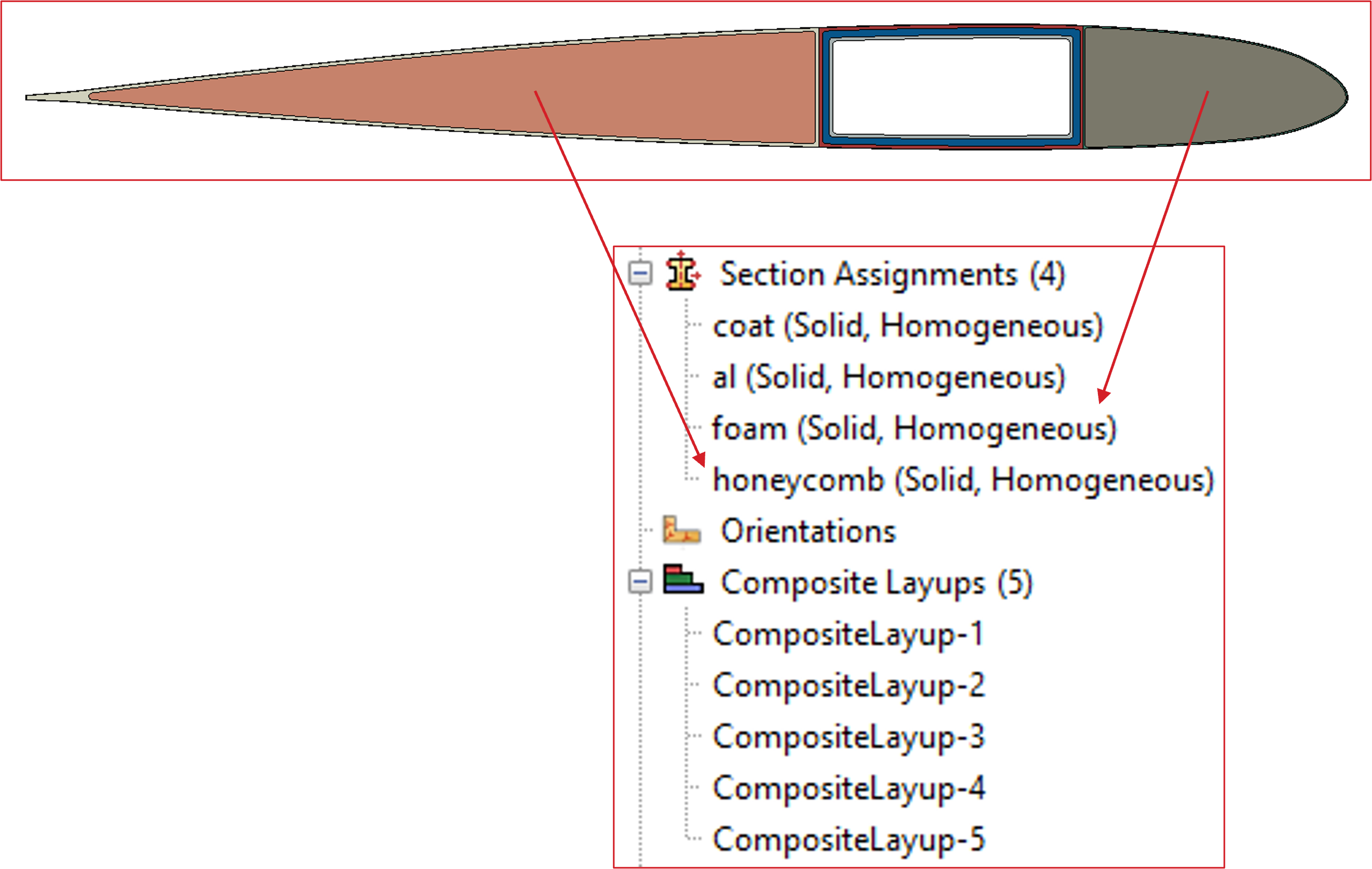Build Cross-section in Abaqus and Export to VABS¶
Brief Instruction¶
Overall, the process is similar to creating a meshed beam cross-section part in Abaqus.
Part:
Modeling space: 2D planar
Type: Deformable
Base feature: Shell
Property:
Material: Any
Section: Composite layup (Solid, Homogeneous)
Mesh: Any
Write the Abaqus model to an INP file.
Convert the INP file to a VABS input file using the command:
python -m sgio convert <filename>.inp <filename>.sg -ff abaqus -tf vabs
Detailed Instruction¶
Part module¶
As a cross-section of a slender structure, it is natural to create a “Deformable” “Shell” part in the “2D Planar” modeling space.

Composite structures can have different materials in different regions. A useful tip is to create a base shape, such as a circle, large enough to cover the entire cross-section. Then, use the “Partition Face” tool to divide the base shape into regions.

Property¶
Any type of material can be used for the cross-section, such as isotropic, engineering constants, or orthotropic. VABS requires local orientation data and allows additional in-plane rotations (fiber angle) for each layer. Hence, it is required to use the “Composite Layup” section type. Here are instructions for setting up a “Composite Layup” section:
Each section contains only one ply.
Layer orientation is defined by assigning the local \(y\) axis, while the local \(x\) axis is always normal to the cross-sectional plane. For a composite layer, the local \(y\) axis is usually set to be tangent to a base line.
To set the fiber angle for each layer, use the column “Rotation Angle”.

It is okay to use the “Composite Layup” section for all materials. However, if a material is isotropic and no local orientation and fiber angle are needed, then it is also acceptable to use the “Solid” section.

Mesh¶
There is no restriction on meshing.

File export¶
Create a job and write the model to an INP file. Then use the command below to convert the INP file to a VABS input file:
python -m sgio convert <filename>.inp <filename>.sg -ff abaqus -tf vabs
By default, the Timoshenko beam model will be used.
To use the Euler-Bernoulli beam model, add the option -m bm1:
python -m sgio convert <filename>.inp <filename>.sg -ff abaqus -tf vabs -m bm1
To see help messages, use the command:
python -m sgio convert -h